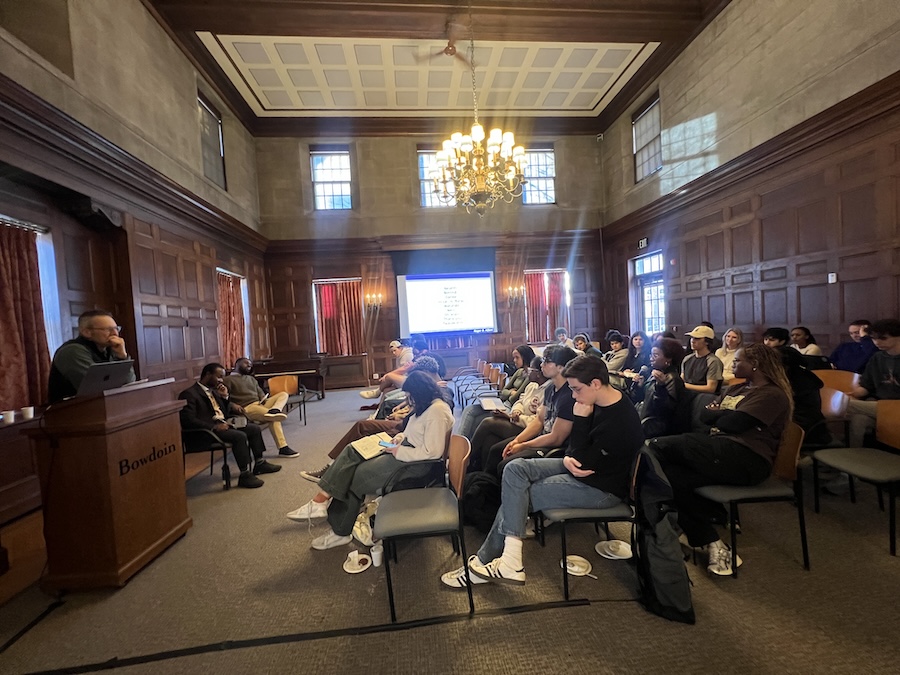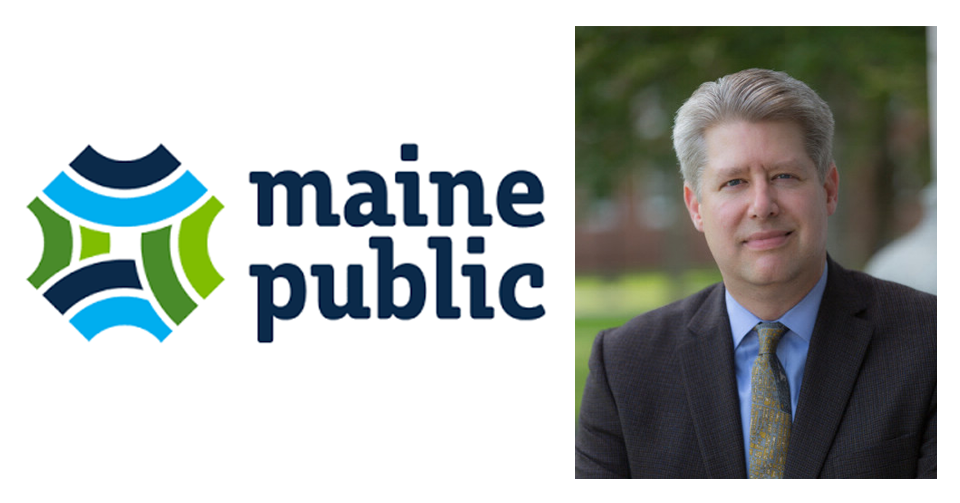President Obama's Cuban Strategy: Prof. Allen Wells Explains
By Tom Porter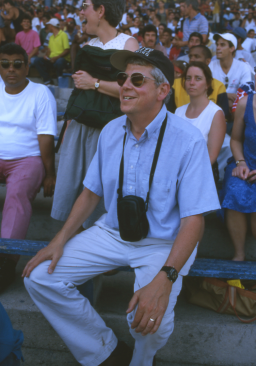
As the Bowdoin-Brunswick community celebrates “Cuba Week this week, political observers are reflecting on President Barack Obama’s recent trip to Cuba. It was certainly one for the record books: Obama became the first US leader in nearly 90 years to visit the Caribbean island, which has been ruled by a communist dictatorship since 1959. The visit comes 16 months after Obama announced the normalization of relations with Cuba in November 2014.
History Professor Allen Wells is a Latin American specialist who has visited Cuba. He spoke with Bowdoin College writer and multimedia producer Tom Porter.
Why do you think Obama went?
The short answer is to burnish his legacy. Obama has done what no other president—Republican or Democrat—was willing to do; alter a belligerent policy which over the course of nine presidential administrations had failed to achieve its sole stated objective—regime change. To be clear, Obama shares the same objective as his predecessors (more on this later), but he contends the US can realize its goal of removing the Castros from power, but by different means.
How long do you think it will take to accomplish this?
Normalization of relations, especially after long periods of strife, are complex, protracted matters, involving much give and take. A recent example was the normalization of relations between Vietnam and the US, which took the better part of twenty years of intense negotiations. And that process did not require a Republican-controlled Congress to put an end to an embargo and one where influential domestic lobbyists who have given millions in campaign contributions to members of both political parties remain staunchly opposed to restoring relations so long as the current regime remains in power.
Thorny issues remain to be hammered out between the former belligerents. From Cuba’s perspective, ending the embargo and eliminating Washington’s so-called “democracy promotion” programs that underwrite the actions of dissidents on the island are prerequisites for moving forward. For its part, Washington wants to put an end to onerous regulations and bureaucratic obstacles in order to open up the island’s economy for foreign investment. Moreover, both sides have an interest in settling outstanding property claims dating back to the onset of the Cuban Revolution in 1959.
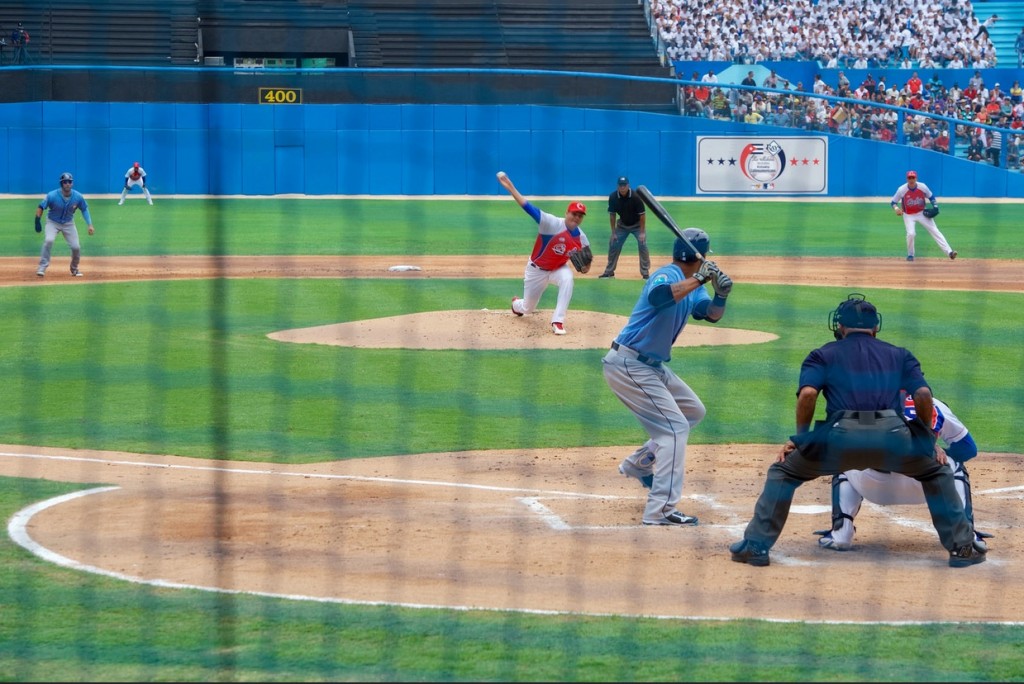
Estadio Latinoamericanos, March 2016. Photograph: US State Dept.
What took you so long, Tom? For me, the most poignant and symbolic harbinger of a more hopeful future was that image of the Obamas sitting next to the Castros at the Estadio Latinoamericano. Leave aside for the moment that the seats were packed with regime loyalists, few venues are more sacred to Cubans. After all, baseball and nationalism are two core attributes of Cuban identity. Peloteros(ballplayers) who have played in the Major Leagues achieve the status of national heroes. During the insurrection against the dictator Fulgencio Batista, los barbudos (the bearded rebels) took time off from fighting in the remote Sierra Maestra mountains to listen to radio broadcasts of the 1957 World Series between the Yankees and the Milwaukee Braves. And during the bleakest days of the Cold War, Cubans on both sides of the Keys, no matter their political affinities, devotedly followed the magnificent careers of exiled major leaguers like Camilo Pascual, Zoilo Versalles, Tony Oliva, Luis Tiant, and Tony Pérez, among others.
Now for only the second time in more than fifty years, Cubans watched with great anticipation as its national team played a major league team, the Tampa Bay Rays – a team representing a city with a substantial Cuban-American population no less. One need not be an aficionado of la pelota, as Cubans affectionately call the sport, to understand that something momentous had transpired.
Forgetting about symbolism for a moment, what about the substance of what Obama said during his trip?
The most painful indicator that little had really changed was the president’s highly lauded speech at the Teatro Nacional. Obama could not resist the opportunity to lecture Cubans about the virtues of democracy and capitalism. Even though many Cubans would agree with him about the pernicious impact of the surveillance state, the state’s shackling of economic life, and the absence of freedom of expression on the island, I’d hazard a guess that this otherwise well-crafted speech did not go over well with many Cubans.
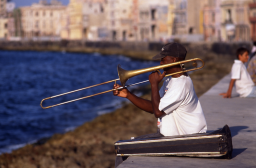
Why? Nationalism is in the Cuban DNA and parts of Obama’s speech smacked of the paternalistic reproaches of proconsuls of the past, such as Sumner Welles and Enoch Crowder, who rarely missed a chance to trumpet the wonders of American exceptionalism, while wielding their influence to make and break governments on the island. It may have reminded some of stories told by their grandfathers about the last visit of a U.S. president to the island in 1928, when Calvin Coolidge reinforced North American hard power by pulling into Havana harbor on a battleship and then showering praise on a brutal and corrupt dictator Gerardo Machado who Washington had propped up in power. Or of the frustrations of the Spanish-American War, an American intervention that eclipsed three decades of a grim struggle for independence against Spanish colonialism. The war’s aftermath would not only erase Cuba’s role in, and even its very name from, the conflict, but trade Spanish rule for North American hegemony. Small wonder, a cry of “Cuba for Cubans” resonated across the island during a frustrated 1933 revolution and was rekindled again during Castro’s insurrection.
After Obama’s preaching, many Cubans might be forgiven for wondering ‘what if the tables were turned.?’ What if Raúl Castro had come to Washington for a state visit and just as Obama had huddled with Cuban dissidents for two hours, Castro met with leaders of the Black Lives Matter movement and then proceeded to lecture members of the U.S. Congress about racism, police brutality and the prison-industrial complex?
It’s seems like quite a strange thing for a world leader to do: Go on an official visit like this as an official guest of the Cuban government, and then encourage regime change. What’s his strategy?
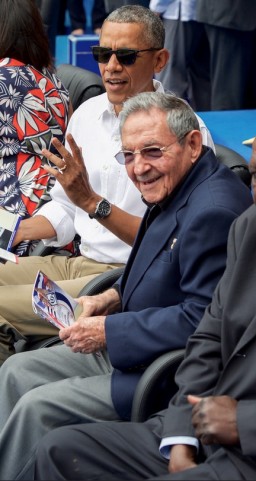
Why Obama feels compelled to do this, I would argue, has less to do with walking the political tightrope back home than his vision for the future of bilateral relations. From when he and Raúl first announced the rapprochement of relations in December 2014, Obama has made it crystal clear that he too has regime change on his mind. Indeed, he reached out directly to the Cuban people explicitly encouraging them to prod their government to bring about meaningful reforms. As he told Reuters, “I believe we can do more to support the Cuban people and promote our values through engagement… Through engagement, we have a better chance of bringing about change than we would have otherwise…And the more the Cuban people see what’s possible, the more interested they are going to be in change…we need to try something new that encourages and ultimately forces the Cuban government to engage in a modern economy.” In fact, most of Obama’s initial pronouncements were directed at everyday Cubans, not to its political gerontocracy, who Obama hopes, would wither away sooner rather than later. Echoing Obama’s mantra was Assistant Secretary of State Tom Malinowski: “Authoritarian regimes don’t just give up their power voluntarily. But change comes by empowering people to demand change. It comes by making the Cuban people less dependent on the Cuban state for their livelihood, for their survival. It comes through information coming from the outside, and less control by the Cuban state. And it comes from international pressure, and we will be able to generate more international pressure on the Cuban government as a result of this policy.”
Obama tells Cubans that Washington wishes better relations with their country, but on America’s terms. One wonders if the president comports himself similarly when he visits other lands governed by repressive dictatorships, some of whom receive ample funding from his administration. This in no way should diminish what Obama has accomplished by bringing an end to an anachronistic chapter of the Cold War. The restoration of bilateral relations will be one of his enduring legacies and he deserves commendation for this act of political courage. For this alone he has earned the gratitude of many Cubans. Nor is this meant to condone in any respect the calcified regime in Havana, which for decades has sought to silence its people, while stifling their entrepreneurial drive. Much work remains to be done on both sides, but a promising start has been made.
Postscript: By contrast, consider the President’s far more thoughtful comments this Thursday in Buenos Aires at the Parque de Memoria, before a monument to the victims of Argentina’s horrific Dirty War. On the fortieth anniversary of the coup that launched that reign of terror, for the first time an American president acknowledged our government’s reluctance to speak out against Argentine generals whose heinous actions cost the lives of an estimated 30,000 Argentines between 1976-1982. I suspect that this modest admission will earn him the admiration of many throughout the hemisphere.

